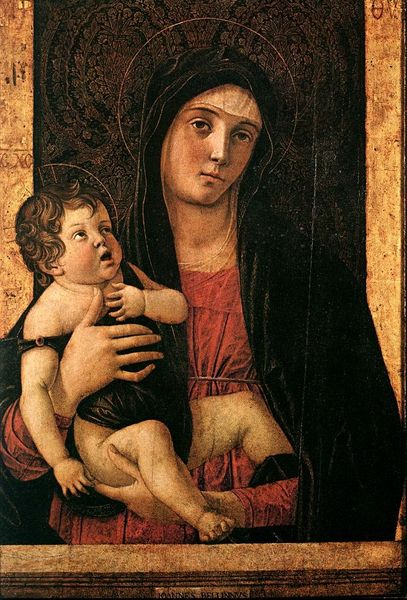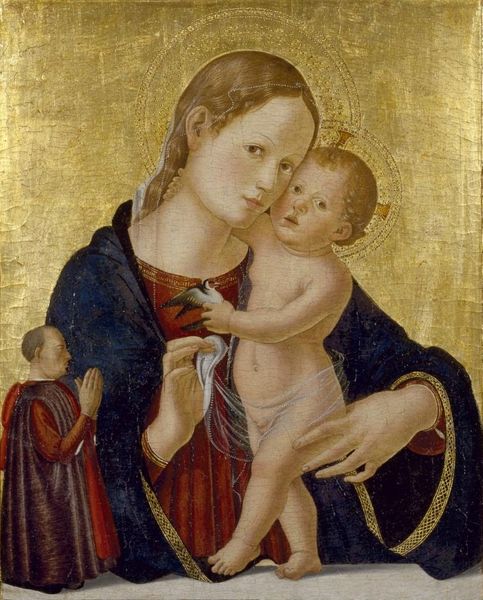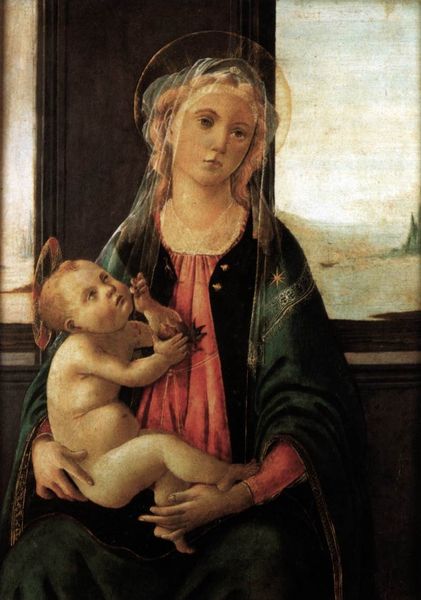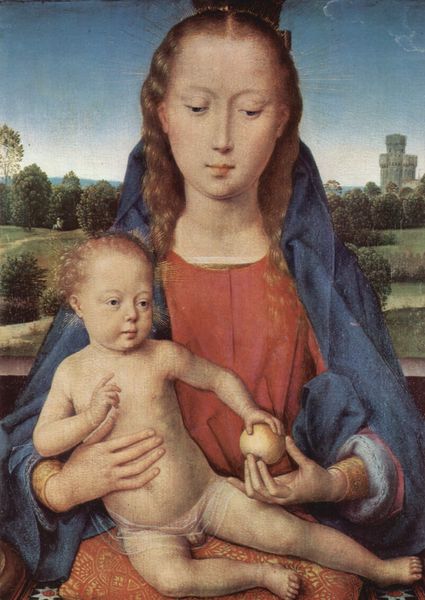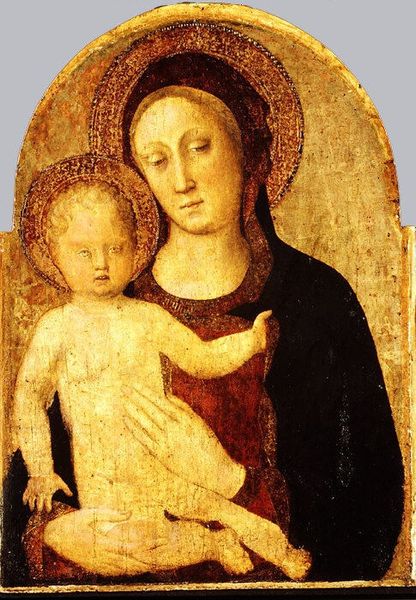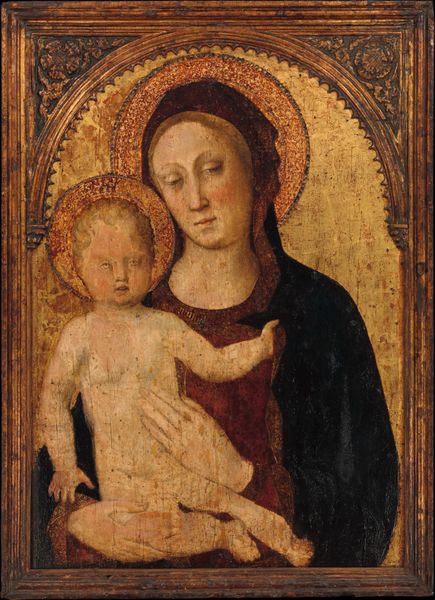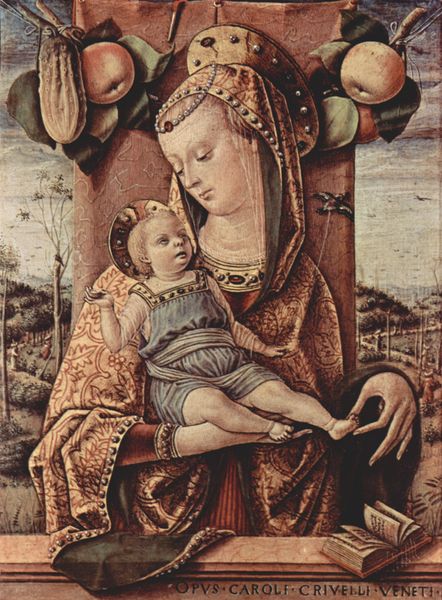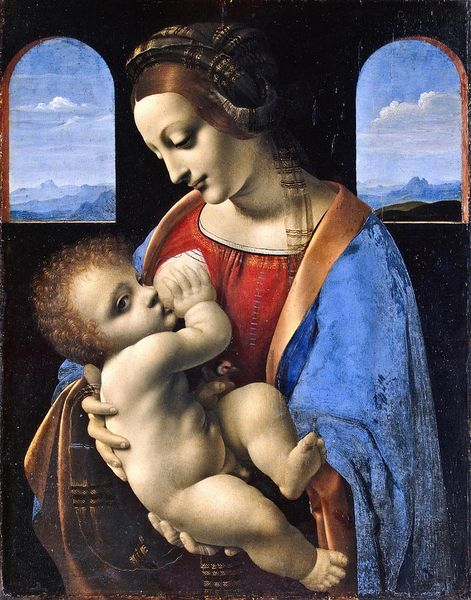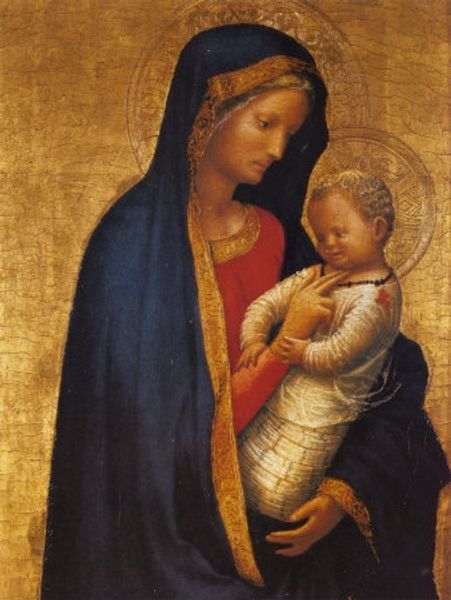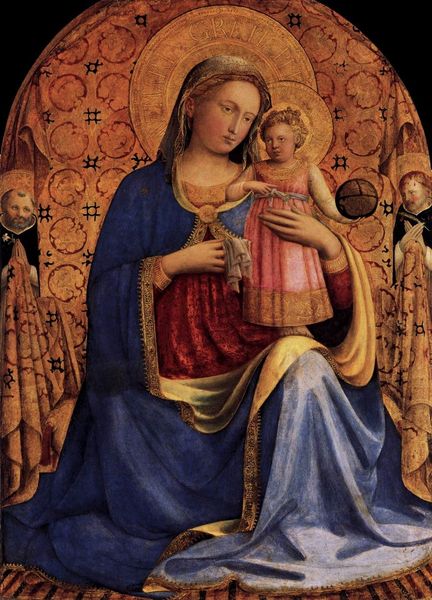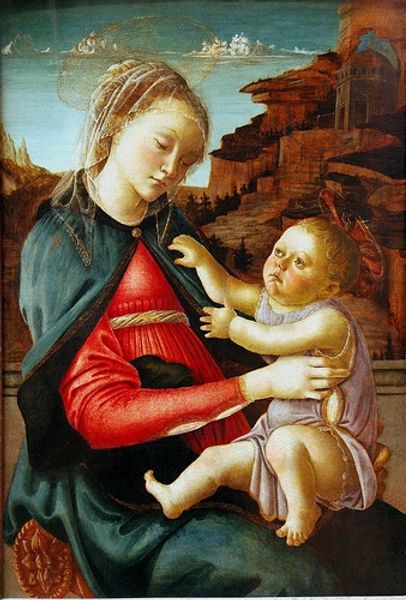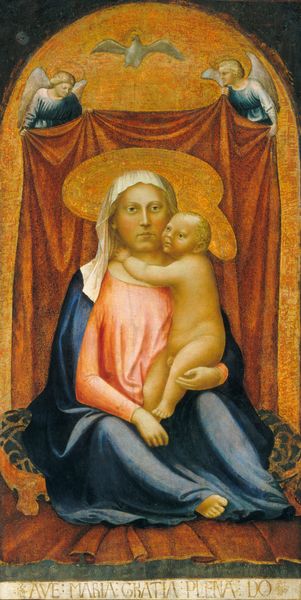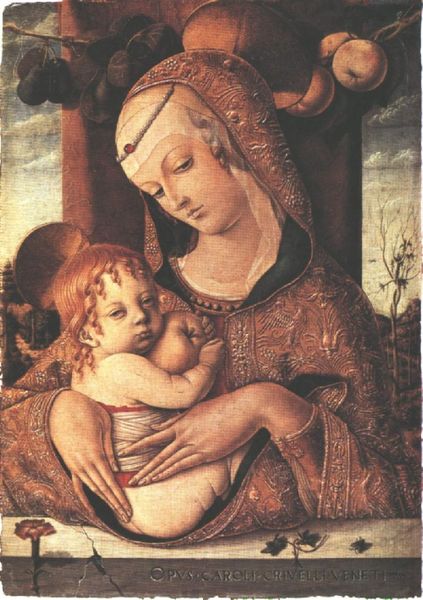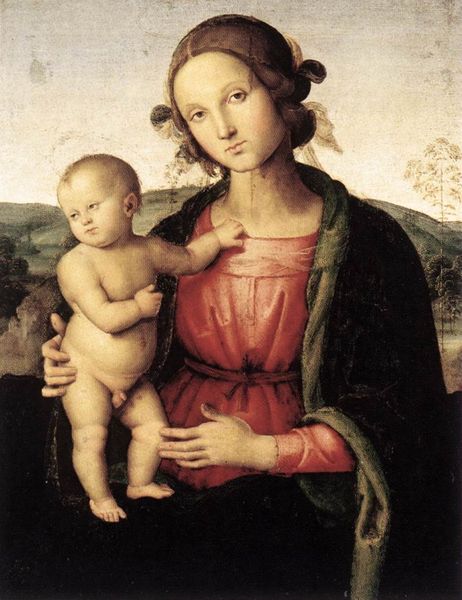
oil-paint
#
portrait
#
oil-paint
#
figuration
#
oil painting
#
christianity
#
history-painting
#
italian-renaissance
#
early-renaissance
#
portrait art
#
virgin-mary
#
christ
Dimensions: 80 x 53 cm
Copyright: Public domain
Editor: This is Filippo Lippi’s “Madonna and Child,” painted around 1450 using oil paint. There’s something quite human about it, not as idealized as some other depictions. How would you interpret the emotional landscape of this piece, especially considering the roles of women in religious art at the time? Curator: The human element is key here, and situates it firmly within its time. It represents a shift toward a more accessible, relatable depiction of religious figures. Think about the Madonna: rather than a distant, ethereal being, she's presented as a mother, and this brings forward the intersection of sacred and maternal roles during a patriarchal era. This image reflects emerging humanistic values of the Renaissance, but also pre-existing narratives about women’s roles and responsibilities. Editor: I see what you mean. So it's about subverting, yet upholding traditional values. What does the child tugging at her veil signify in the painting, if anything? Curator: It complicates the narrative. On one hand, it's just a child being a child, demanding attention. On the other, is it about questioning, of pulling back the veil of secrecy, the veil that limits access and empowerment? It brings attention to the power dynamics inherent in representing motherhood and divine authority, don't you think? Editor: It makes me wonder, how intentional was Lippi in encoding these meanings, or is it more of a reflection of the societal context that inevitably seeps into the artwork? Curator: Exactly! That tension, that gray area, is precisely where the art becomes interesting. He lived it, breathed it; it's impossible to separate the artist from their social surroundings. Whether it was intentional or subconscious, the historical context is integral. Editor: That’s insightful. Thanks for helping me view it through a new lens. I’ll never look at Renaissance art the same way again. Curator: It was my pleasure! Now you’ll carry these seeds of inquiry forward.
Comments
No comments
Be the first to comment and join the conversation on the ultimate creative platform.
